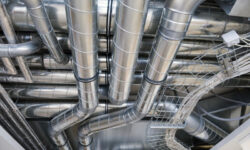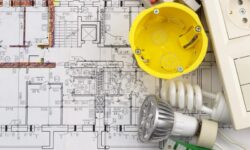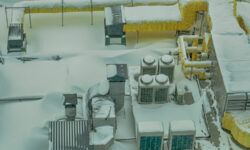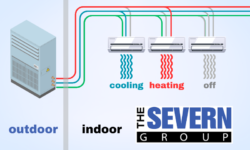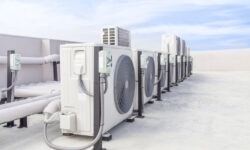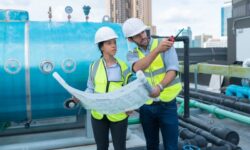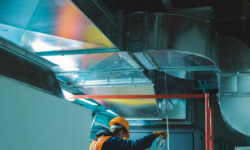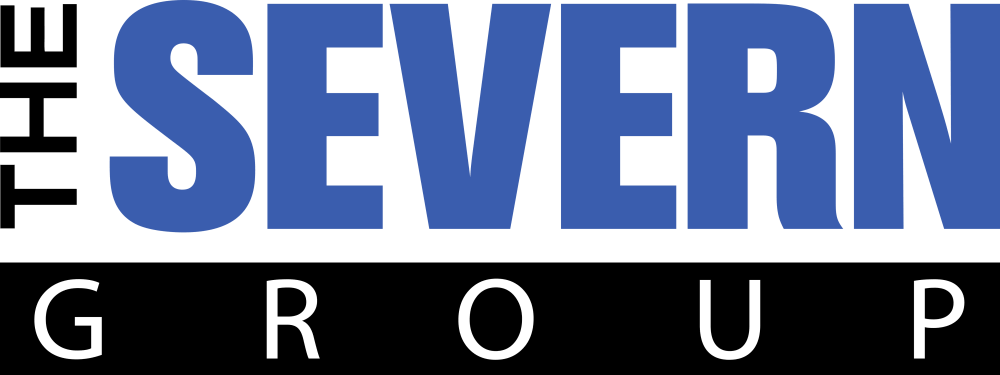Heat Recovery Ventilation (HRV) and Energy Recovery Ventilation (ERV) systems are vital for modern buildings. They provide fresh air while conserving energy, helping maintain indoor air quality, reduce energy costs, and enhance overall comfort. Let’s explore what HRV and ERV systems are, their applications, and their benefits.
Read more →In the realm of modern comfort, few inventions rival the impact of air conditioning. From commercial buildings to offices, shopping malls to hospitals, air conditioning systems have become indispensable fixtures, regulating indoor temperatures and fostering environments conducive to productivity, relaxation, and well-being.
Read more →Regarding home comfort, we often focus on the big players: the furnace, the air conditioner, and the thermostat. But what about the unsung hero of your HVAC system? Enter ductwork – the silent, winding network that delivers heated or cooled air to every room in your building.
While it may not get the attention it deserves, ductwork plays a crucial role in the efficiency and effectiveness of your heating, ventilation, and air conditioning system. Let’s investigate why ductwork is truly the heart of your HVAC system.
Read more →The importance of an efficient HVAC (Heating, Ventilation, and Air Conditioning) system cannot be overstated in commercial and industrial spaces. From maintaining comfortable indoor temperatures to ensuring optimal air quality, HVAC systems are critical in creating a conducive environment for employees and customers. However, achieving this requires more than just off-the-shelf solutions. Enter design-build HVAC systems – a customized approach that offers tailored solutions ideally suited to your business needs.
Read more →As a business owner or facility manager, you want to make sure your commercial building is safe and comfortable for its occupants. One vital aspect of achieving this comfort is effectively managing HVAC systems, especially during peak seasons. As the seasons change, so do the demands on your commercial HVAC system. Whether it’s the scorching heat of summer or the bitter cold of winter, maintaining a comfortable indoor environment in your commercial space is important for the well-being of employees and customers alike. In this blog, we’ll explore the challenges of managing HVAC during peak seasons and provide valuable tips to ensure your space remains comfortable year-round.
Read more →Mastering comfort and efficiency with zoned HVAC systems for multi-tenant commercial buildings can be a challenge but one with considerable benefit. In the ever-evolving commercial real estate landscape, property managers and building owners are constantly seeking ways to enhance tenant satisfaction, reduce energy costs, and improve overall building performance. One innovative solution that checks all these boxes is the implementation of Zoned HVAC Systems. The Severn Group will explore the benefits and considerations of using Zoned HVAC Systems in multi-tenant commercial buildings.
Read more →Heating, ventilation, and air conditioning (HVAC) systems are essential for maintaining comfort in buildings, whether they are residential, commercial, or industrial. However, they can also be one of the largest energy consumers in these structures. As a result, the quest for more energy-efficient HVAC solutions has led to the development of Variable Refrigerant Flow (VRF) HVAC systems. This blog post will explore how VRF HVAC systems work and how they maximize energy efficiency to reduce operational costs.
Read more →Optimizing HVAC (Heating, Ventilation, and Air Conditioning) performance through system balancing is crucial in maintaining indoor comfort and air quality. However, even the most advanced HVAC systems can underperform if they are not correctly balanced. System balancing is a critical maintenance process that ensures your HVAC system operates efficiently, minimizes energy consumption, and extends lifespan. Within this blog, The Severn Group will take you on a journey and explore understanding what system balancing is, the importance of system balancing, and provide tips on optimizing your HVAC performance.
Read more →Streamlining comfort and efficiency means integrating HVAC and Plumbing design in large-scale commercial projects. When embarking on large-scale commercial construction projects, countless factors must be considered to ensure success. Among these, two crucial components stand out: Heating, Ventilation, and Air Conditioning (HVAC) systems and plumbing. Integrating these systems seamlessly is essential for comfort, efficiency, and cost-effectiveness.
Read more →As the seasons change and the weather becomes more extreme, our HVAC (Heating, Ventilation, and Air Conditioning) systems play a crucial role in maintaining a comfortable indoor environment. However, even the most advanced HVAC systems can encounter efficiency issues if there are air leaks in the system. In a commercial setting, HVAC systems work overtime to accommodate larger spaces and more occupants. The consequences of air leaks can be more profound, affecting employee productivity, customer experience, discomfort, inefficiencies, and even regulatory compliance. Energy inefficiency could lead to soaring utility bills, cutting into profit margins.
Read more →

